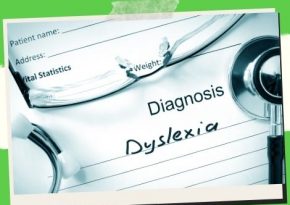
Adolescents with Smoking-Related Health Issues
Smoking causes a variety of ailments and kills approximately 442 thousand individuals in the United States each year. Despite anti-smoking initiatives and billboard warnings, each year an increasing number of people join the smoking bandwagon. Ninety percent of new smokers are children and adolescents, who are replacing smokers who have quit or died young from an illness caused by smoking. Obesity and smoking are the leading causes of preventable and untimely deaths.
Not only does smoking increase the risk of lung illness, but it also increases the chance of lung cancer, oral cancer, emphysema, stroke, and heart disease. The American Lung Association has released some disturbing facts. Every day, over 5,000 adolescents try their first cigarette, with over two thousand going on to become regular smokers. There are over five million adolescent smokers in the United States now. Twenty percent of twelfth-grade students smoke cigarettes on a regular basis.
Smoking has a number of negative effects on a person’s health. It harms the cardiovascular system, raises blood pressure, raises the heart rate, raises the risk of ischemic stroke, raises the chance of blood clot formation, lowers the quantity of oxygen that reaches the body’s tissues, reduces coronary blood flow and cardiac output, and destroys blood vessels. Smoking has a negative impact on both physical and mental health. It leads to mental anguish and melancholy.
Smoking has an impact not just on the smoker but also on others around him or her. According to the American Heart Association, almost 35,000 people die each year from inhaling smoke from a lit pipe, cigar, or cigarette. Passive smokers, secondary smokers, and indirect smokers are people who do not smoke directly but inhale smoke from their neighbor’s cigarette. Women, children, and newborns are more vulnerable to passive smoking than men. When infants and children are exposed to smoking, they develop asthma, ear infections, and perhaps infant death syndrome. Coughing, increased mucus development in the airways, chest discomfort, chest pain, and lung irritation are all symptoms encountered by secondary smokers. They also experience inflammation in their throats, noses, and eyes. If a passive smoker develops chest pain, it could be a sign of a cardiac condition. Symptoms of secondary smoking can sometimes be confused with those of other medical disorders. As a result, it is recommended that you see a doctor as soon as the symptoms appear.
Apart from increasing the risk of cardiovascular disease, obesity, high blood pressure, physical inactivity, and diabetes in active smokers, smoking increases the risk of cardiovascular disease, obesity, high blood pressure, physical inactivity, and diabetes. As a result, quitting smoking reduces not just the risk of coronary heart disease, which is at the top of the list, but also the chance of heart attacks and fatalities caused by it by half. However, quitting smoking necessitates a significant amount of physical and mental effort. Mentally, the person should be relaxed and stress-free. Adolescents can be encouraged to exercise regularly and get enough sleep. The American Lung Association and the American Academy of Otolaryngology have created a set of guidelines for smokers who are considering stopping. To begin, smokers must be made aware of the reasons for quitting. Because stress makes quitting smoking much more difficult, a stress-free period should be chosen to quit. Encouragement and support from family and friends are critical in persuading a smoker to quit. If the support isn’t enough, smokers can seek help from a smoking cessation program or a support group. A well-balanced diet, as well as enough relaxation, are essential.
Smokers who want to stop can benefit from nicotine replacement products such as nicotine chewing gum, nicotine inhalers, and nicotine patches. Smokers can satiate their nicotine cravings by using these goods. The good news is that these nicotine replacement medications can eliminate the harmful gases and tars that cigarettes generate. However, women who are breastfeeding or pregnant should seek medical advice before using nicotine replacement medications. Non-nicotine alternatives are available on the market for such folks.
Save/Share this story with QR CODE
Disclaimer
This article is for informational purposes only and does not constitute endorsement of any specific technologies or methodologies and financial advice or endorsement of any specific products or services.
📩 Need to get in touch?
Feel free to Email Us for comments, suggestions, reviews, or anything else.
We appreciate your reading. 😊Simple Ways To Say Thanks & Support Us:
1.) ❤️GIVE A TIP. Send a small donation thru Paypal😊❤️
Your DONATION will be used to fund and maintain NEXTGENDAY.com
Subscribers in the Philippines can make donations to mobile number 0917 906 3081, thru GCash.
3.) 🛒 BUY or SIGN UP to our AFFILIATE PARTNERS.
4.) 👍 Give this news article a THUMBS UP, and Leave a Comment (at Least Five Words).
AFFILIATE PARTNERS

World Class Nutritional Supplements - Buy Highest Quality Products, Purest Most Healthy Ingredients, Direct to your Door! Up to 90% OFF.
Join LiveGood Today - A company created to satisfy the world's most demanding leaders and entrepreneurs, with the best compensation plan today.



 Business Technology, Finance Technology & Information Technology
Business Technology, Finance Technology & Information Technology




